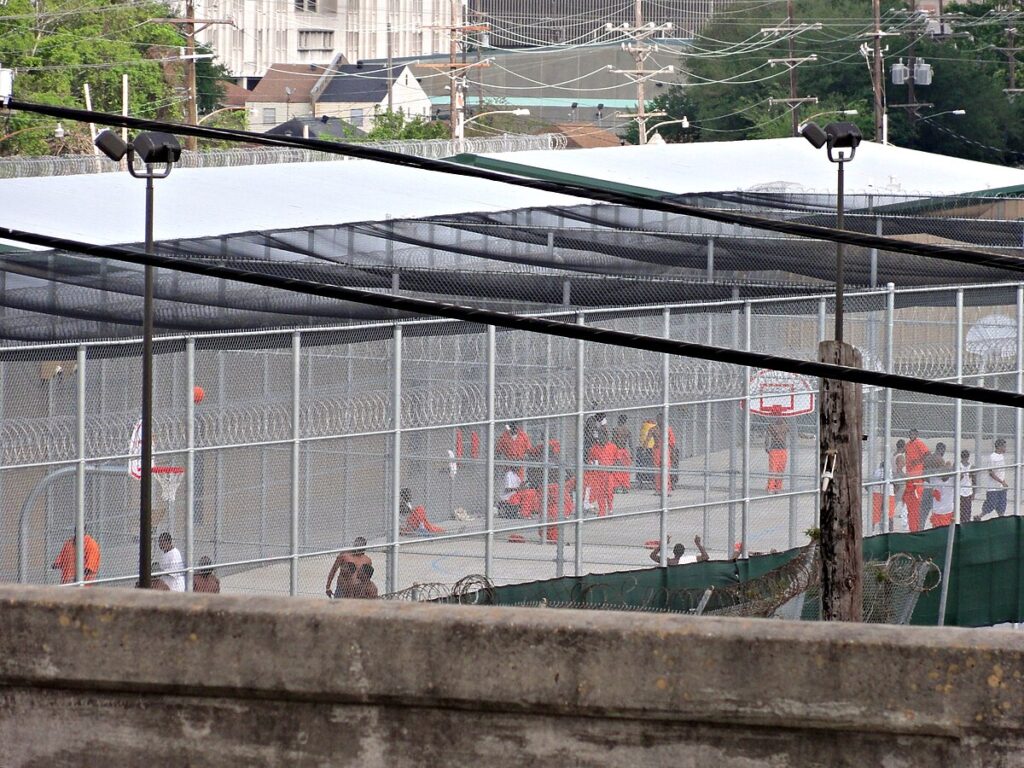
In the early hours of May 16, ten pre-trial inmates slipped out of the Orleans Parish Jail through a hole they cut in a cell wall behind a metal toilet. Surveillance video showed that the lone guard had stepped away for food around 12:20 a.m., and the prisoners “yank open a cell door” and then emerge through the enlarged plumbing hole.
By the fence to reach a nearby highway. A headcount begins around 6:30 a.m., but jail officials did not confirm the escape until hours later. Normally, a headcount begins around 6:30 a.m., but jail officials did not confirm the escape until hours later. Orleans corrections chief Jeworski “Jay” Mallett said it remains unclear exactly when staff realized the ten men were gone, because the usual morning count was delayed. The jail finally ordered a lockdown at about 8:45 a.m., and Sheriff Susan Hutson formally reported the break-in around 9:30 a.m. Even then, outside police were kept in the dark: New Orleans Police Supt. Anne Kirkpatrick learned of the jailbreak only indirectly after 10:30 a.m., not from the sheriff’s office.
The breakout exposed multiple security lapses. In a Sheriff’s Office photograph released after the incident, the jail used for the escape shows the metal toilet priory off its mount and a rectangular hole roughly about 18×28 inches cut into the concrete wall behind it. Above the cut-out, inmates had written “Too Easy LoL” with an arrow pointing to the gap. The investigators say the detainees exploited a “faulty locking system” and a lapse in supervision. Shortly after midnight, a corrections technician monitoring cameras left to get food, and deputies failed to notice the cell door being opened. Orleans Parish Jail’s DA Jason Williams noted a press conference that staff had to go back and look at footage,” instead of watching live feeds – a ‘ridiculous” practice given the cameras. By the time the door finally opened, all ten men rushed into the adjacent holding cell and removed the plumbing around the toilet to enlarge the hole, and slipped through to freedom in minutes.
One inmate even ordered on-duty maintenance worker Sterling Williams to turn off the water, threatening to stab him with a homemade shank if he refused; Williams says he complied.
Beyond the obvious jailbreak plan, systemic failures worsened the breach. Sheriff Hutson admitted the jail lacked basic fail-safes: it had no door-sensor alarms or a 24/7 security contract to monitor cameras. A high-density video surveillance system (some 900 cameras) existed, but deputies on duty did not follow the intended “direct supervision” model. Federal consent-decree monitors had repeatedly warned that rounds and cell inspections were not being done as required. Inmates reportedly complained that guards were often out of sight, leaving entire pods effectively unsupervised. By contrast, former Sheriff Marlin Gusman noted that under his watch deputies physically patrolled the cell blocks every 15–30 minutes. By this spring Hutson’s leadership had been cited for “partial compliance” on those standards, and inmates caught on video inside with contraband went unchallenged for too long.
City and state officials immediately seized on the breakout as evidence of a leadership collapse. In a heated City Council hearing May 20, Sheriff Hutson “took full responsibility” for the failures, but also tearfully conceded that the escape was in part “a coordinated effort, aided by individuals inside our own agency”. She confirmed staff and procedural breakdowns: sensors and alarms were not installed, the nightly security vendor contract lapsed, and important notifications were missed. At the same meeting, Hutson announced she was temporarily suspending her campaign for re-election to focus on the crisis. She also said the department was “continuing to pursue everyone involved” and had already made one arrest (Sterling Williams) in the ongoing investigation.
Jail breaks of this scope are unusual in the U.S., but staffing crises have made escapes more common in some jurisdictions. For years, for example, Philadelphia’s jails have grappled with a 45% officer vacancy rate, “severe staffing shortages” and “multiple jail escapes” in the same week. Local leaders note that Orleans Parish itself has been under federal oversight since 2003 for chronic staffing and safety problems. In that light, the May 16 escape has prompted wide calls for reform. In New Orleans, city councilors are reviewing policies to tighten monitoring and reporting; state legislators have already moved to pass the immediate-notification bill. On the prosecution side, District Attorney Jason Williams condemned the “cascading series of ‘breakdowns’” that let the plan succeed.
Keep Reading Dip Dives for more news.


